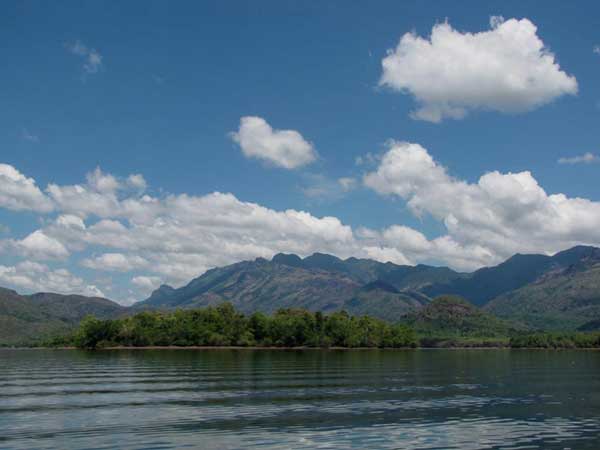
Photo courtesy Davidson Sargunam >>
Millions of people live in and near India’s forest lands, but have no legal right to their homes, lands or livelihoods. A few government officials have all power over forests and forest dwellers. The result? Both forests and people die. This Act recognises forest dwellers’ rights and makes conservation more accountable.
Source: What is the Forest Rights Act about?
URL: https://forestrightsact.com/what-is-this-act-about/
Date Visited: 28 October 2021
Guide to the Forest Rights Act
[…] This booklet describes the Act and how it can be used. But first, let us see what is happening in the forests in more detail. […]
What is this Act about? The fire in India’s forest areas is not a recent phenomenon. Forest laws passed and instituted by the British have been used to seize the lands, homes and resources of adivasis and other forest dwellers, first for British timber needs, then for “national industry” and government revenue, and now in the name
of conservation.How did this happen? In the nineteenth century, the British wanted to undertake unhindered exploitation of timber, which required that the government assert its ownership over forests and suppress the traditional systems of community forest management that existed in most of the country. This had nothing to do with conservation; it was an effort to take control over trees, timber and vast areas of community land that was not and never had been forest. “Scientific forest management” introduced by the British was designed for ‘sustained yield of timber’ and little else. The result was the Indian Forest Acts, a series of which were passed from 1876 through 1927. The 1927 Act remains India’s central forest legislation. These Acts empowered the government to declare its intention to notify any area as a reserved or protected forest, following which a “Forest Settlement Officer” supposedly would enquire into claims of rights (to land, forest produce, pasture, etc.) and decide whether to record people’s rights or not. […]
This booklet is a brief guide to the forest rights Act as passed and to the Rules framed under it by the Ministry of Tribal Affairs. […]
The Act contains some special provisions for protected areas. Until now, it was the practice of the Forest Department to resettle people out of national parks and sanctuaries – especially from tiger reserves – by claiming that they were hurting wildlife. Even where the actual resettlement did not take place, the Forest Department would use it to threaten people and to prevent the construction of roads, schools etc. inside these villages. This is what happened in places like Sariska Tiger Reserve.
With the Act this has now changed. The Act provides protection against forcible relocation of people living in protected areas. Notwithstanding the claims by the government and the press, forest dwellers cannot be forced to move out of even tiger reserves in the name of wildlife conservation except with the free, informed consent of the gram sabha (section 4(2)(e)). These are the other conditions that apply […]
CAMPAIGN FOR SURVIVAL AND DIGNITY
National Convenor: Pradip Prabhu, 3, Yezdeh Behram, Kati, Malyan, Dahanu Rd. 401602.
Delhi Contact: Q-1 Hauz Khas Enclave, New Delhi 110 016. Ph: 9968293978, 26569023.
Source: Using the Forest Rights Act
Address : <http://www.forestrightsact.com/resources-for-activists>
Date Visited: Sat Oct 04 2014 14:40:39 GMT+0200 (CEST)
“The British established mode of forest governance imposed restrictions on local forest-dwelling communities. In 1860, the Company withdrew all access rights for using the forests (food, fuel, medicine and selling forest products) since the forests and forest-dwelling communities provided refuge to the rebels during the Sepoy Mutiny.” – Bharat Rural Livelihoods Foundation >>
“Tribal population was spread all over India and most of them occupied wild tracts, hilly and forested areas, away from more civilized centers. In 1880 their population was estimated at about seventy million. They had existed for centuries with their own social traditions and beliefs and subsisted on natural resources. They had preserved their near isolation and way of life until the British administration and policies made inroads into their territories.” – Subha Johari in Tribal Dissatisfaction Under Colonial Economy of 19th Century >>
“Tribal communities have proven that they are the best guardians of the forest and die-hard conservationists”: Illegal mining destroys the life and culture of the conservators of forests >>
“Even though they are responsible for protecting the largest part of the global forest heritage […] a third of indigenous and community lands in 64 countries are under threat due to the lack of land tenure rights.” – Pressenza Rio de Janerio in “Indigenous people are heading to CoP26: ‘There is no solution to the climate crisis, without us’” (Down To Earth, 1 November 2021) >>

“Two main streams within Indian anthropology influenced the literary and visual representations of tribes by mainstream writers, artists and film-makers.” – Dr. Ivy Hansdak clarifies how they are associated with “assimilationist” and “isolationist” positions or policies >>
In Marginalised but not Defeated, Tarun Kanti Bose (a seasoned public interest journalist) “documents the hard and difficult struggle to implement the Forest Rights Act, how the oppressed adivasis have united into forest unions, how they are now entering into new thresholds of protracted struggles and victories in a non-violent manner.” | Learn more: https://countercurrents.org/2023/05/book-review-marginalised-but-not-defeated >>
“Tribal men and women mix freely, but with respect for each other [but] caste Hindu society in India is so convinced of its own superiority that it never stops to consider the nature of social organisation among tribal people. In fact it is one of the signs of the ‘educated’ barbarian of today that he cannot appreciate the qualities of people in any way different from himself – in looks or clothes, customs or rituals.” – Guest Column in India Today >>
Learn more about colonial policies, the Forest Rights Act, its importance for ecology, biodiversity, ethnobotany and nutrition, and about the usage of Adivasi (Adibasi) communities in different states of India: in legal and historical records, in textbooks, scholarly papers and the media >>
See also
Adverse inclusion | Casteism | Rural poverty
Demographic Status of Scheduled Tribe Population of India (Census figures 2011)
Fact checking | Figures, census and other statistics
Human Rights Commission (posts) | www.nhrc.nic.in (Government of India)
Search tips | Names of tribal communities, regions and states of India
“What is the Forest Rights Act about?” – Campaign for Survival and Dignity
“Who are Scheduled Tribes?” – Government of India (National Commission for Scheduled Tribes, NCST)